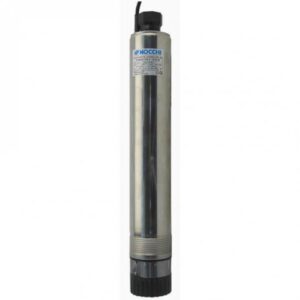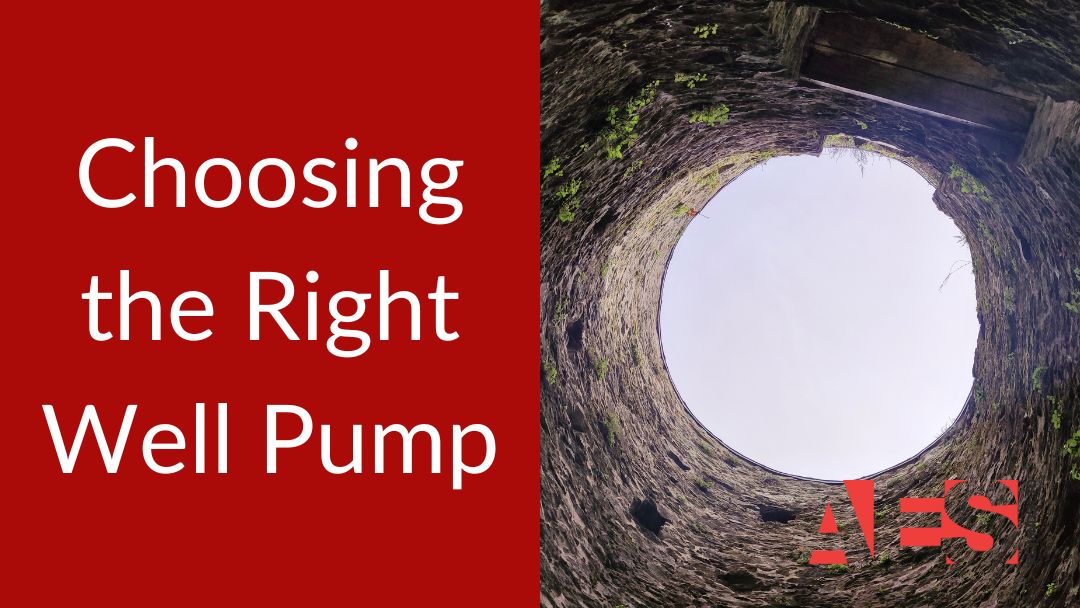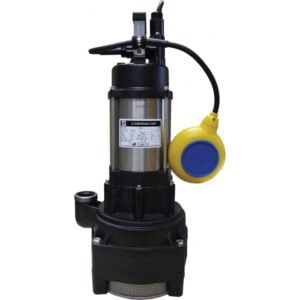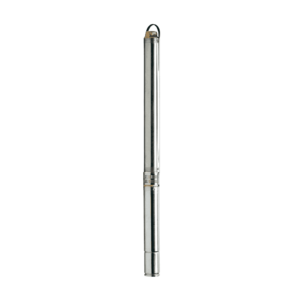When you’re selecting the right well pump, it’s vital to understand your specific water requirements and the characteristics of your well. You’ll need to take into account factors like well depth, flow rate, and pressure needs to guarantee the pump operates efficiently.
But that’s just the beginning; there are important details about pump types, sizing, and even maintenance that can greatly impact your decision.
As you navigate these considerations, you might wonder what aspects are often overlooked that could affect your long-term satisfaction with your pump choice.
Key Takeaways
- Determine your well depth to select between submersible pumps for deep wells and jet pumps for shallow wells.
- Calculate your household water demand, aiming for 20-50 litres per minute for optimal performance.
- Assess required pressure levels (3-5 bar) to ensure consistent water delivery throughout your home.
- Match the replacement pump’s specifications with existing requirements to maintain efficient operation and performance.
- Regularly perform maintenance checks on all system components to prolong pump life and prevent unexpected breakdowns.
What Is a Well Pump?

A well pump is a fundamental device that extracts water from underground wells, making it essential for homes without a municipal water supply. These electromechanical devices come in several types, including submersible pumps, which are designed to operate submerged in water, and jet pumps, which are better suited for shallower wells.
Choosing the right well pump requires understanding your specific needs, especially the depth of your well and your household’s water demand. For instance, submersible pumps are typically preferred for deep wells, as they can efficiently lift water from significant depths, ensuring a reliable water supply. Additionally, exploring options like multistage pumps can help optimise water flow for your specific requirements.
For an average home, you typically need a pump that can deliver 30 to 50 litres per minute to maintain adequate water pressure. If you have a deep well, a submersible pump is often your best option, as it can efficiently lift water from significant depths. The pump’s performance directly impacts your daily water usage, so selecting one that matches your well’s characteristics is fundamental.
Regular maintenance is essential to prolonging the lifespan of your well pump, with many high-quality models lasting anywhere from 6 to 25 years. By understanding what a well pump is and how it fits into your water system, you can make an informed choice that meets your home’s needs.
How Does a Well Pump Work?
Well pumps function by harnessing electric motors to create suction or pressure that draws water from underground sources. There are two main types of well pumps: submersible and shallow well jet pumps.
Submersible pumps operate underwater, using an impeller to push water to the surface. In contrast, shallow well jet pumps employ a combination of water pressure and suction to lift water from depths of 8 metres or less.
Typically, the water is delivered at a pressure of 3-5 bar, providing sufficient flow to taps and fixtures throughout your home.
Understanding how these systems work is essential when selecting the right pump for your needs, ensuring you choose the best option for your water requirements and well depth.
Do you Have a Shallow or Deep Well?
Determining whether you have a shallow or deep well is crucial for selecting the right pump. Shallow wells are generally less than 8 metres deep, and for these, you’ll need a shallow well jet pump to operate efficiently. These pumps are designed to lift water from the water table effectively.
On the other hand, deep wells range from 25 to 120 metres, requiring submersible well pumps that can function at greater depths.
It’s important to measure your well’s depth accurately, which you can do using a well driller’s report or a simple DIY method with a string and bobber. Knowing the depth helps you avoid issues related to pump performance and longevity.
If your well is deep, a deep well jet pump might be an option, but typically, submersible pumps are the go-to choice.
Additionally, it’s crucial to evaluate the foot valve for ideal water delivery. Choosing the right pump based on your well’s depth guarantees efficient operation, tailored to your water needs.
What Type of Well Pump Do I Need?

When choosing a well pump, it’s essential to take into account the depth of your well and your specific water needs.
Submersible well pumps are ideal for deeper wells, providing efficiency and longevity, while jet pumps work well for shallower depths.
Understanding these options will help you select the right pump that fits your situation and guarantees reliable water access.
Submersible Well Pumps
Submersible well pumps are an excellent choice for homeowners with deeper wells, typically ranging from 25 to 120 metres. These pumps operate underwater, efficiently lifting water to the surface and catering to higher water demands.
One significant advantage of submersible well pumps is their hermetically sealed design, which reduces maintenance requirements and enhances durability compared to above ground pumps.
With proper maintenance, the average lifespan of a submersible pump can reach up to 25 years, providing a reliable and consistent water source for your home.
However, installation can be more complex than that of shallow well pumps, often necessitating professional assistance.
Ensuring the correct setup is essential for peak performance.
When you decide on a submersible pump, you’re investing in a system that balances efficiency and longevity, perfectly suited for deeper well applications.
Jet Well Pumps
If your well is shallow, jet pumps might be the right fit for your needs. Designed for depths up to 8 metres/25 feet, these pumps operate using suction created by a jet nozzle, effectively drawing water from your well.
Jet pumps are typically installed above ground, making them easier to access for maintenance compared to submersible pumps.
You’ll find single-drop and double-drop configurations available. Single-drop jet pumps are ideal for shallow applications, while double-drop models can reach depths up to 30 metres, requiring a foot valve for peak operation. The centrifugal force generated within the pump enhances water delivery, ensuring a reliable supply.
Regular maintenance is important to mitigate issues such as sand damage or wear on seals, which can affect performance. With their straightforward installation and maintenance, jet pumps offer a practical choice for homeowners looking to efficiently manage their water supply.
-
%27%20fill-opacity%3D%27.5%27%3E%3Cellipse%20fill%3D%22%23161616%22%20fill-opacity%3D%22.5%22%20rx%3D%221%22%20ry%3D%221%22%20transform%3D%22matrix(48.13886%201.37382%20-4.86726%20170.54992%20137.3%20215.7)%22%2F%3E%3Cellipse%20fill%3D%22%23fff%22%20fill-opacity%3D%22.5%22%20rx%3D%221%22%20ry%3D%221%22%20transform%3D%22matrix(-15.01428%20-298.4507%2054.55375%20-2.74446%20260.8%20158.6)%22%2F%3E%3Cellipse%20fill%3D%22%23fff%22%20fill-opacity%3D%22.5%22%20rx%3D%221%22%20ry%3D%221%22%20transform%3D%22matrix(41.57391%20-295.81377%2049.29282%206.92765%2030%20123.8)%22%2F%3E%3Cellipse%20fill%3D%22%23161616%22%20fill-opacity%3D%22.5%22%20rx%3D%221%22%20ry%3D%221%22%20transform%3D%22rotate(93.3%20-45%20182.4)%20scale(66.64696%2026.0712)%22%2F%3E%3C%2Fg%3E%3C%2Fsvg%3E) JS-530 Well Buddy Multi Stage Irrigation Pump – 110v Automatic – 011-532A£317.41 +VAT
JS-530 Well Buddy Multi Stage Irrigation Pump – 110v Automatic – 011-532A£317.41 +VAT -
%27%20fill-opacity%3D%27.5%27%3E%3Cellipse%20fill%3D%22%23161616%22%20fill-opacity%3D%22.5%22%20rx%3D%221%22%20ry%3D%221%22%20transform%3D%22matrix(48.13886%201.37382%20-4.86726%20170.54992%20137.3%20215.7)%22%2F%3E%3Cellipse%20fill%3D%22%23fff%22%20fill-opacity%3D%22.5%22%20rx%3D%221%22%20ry%3D%221%22%20transform%3D%22matrix(-15.01428%20-298.4507%2054.55375%20-2.74446%20260.8%20158.6)%22%2F%3E%3Cellipse%20fill%3D%22%23fff%22%20fill-opacity%3D%22.5%22%20rx%3D%221%22%20ry%3D%221%22%20transform%3D%22matrix(41.57391%20-295.81377%2049.29282%206.92765%2030%20123.8)%22%2F%3E%3Cellipse%20fill%3D%22%23161616%22%20fill-opacity%3D%22.5%22%20rx%3D%221%22%20ry%3D%221%22%20transform%3D%22rotate(93.3%20-45%20182.4)%20scale(66.64696%2026.0712)%22%2F%3E%3C%2Fg%3E%3C%2Fsvg%3E) JS-530 Well Buddy Multi Stage Irrigation Pump – 230v Automatic – 011-530A£317.41 +VAT
JS-530 Well Buddy Multi Stage Irrigation Pump – 230v Automatic – 011-530A£317.41 +VAT -
%27%20fill-opacity%3D%27.5%27%3E%3Cellipse%20fill%3D%22%23161616%22%20fill-opacity%3D%22.5%22%20rx%3D%221%22%20ry%3D%221%22%20transform%3D%22matrix(48.13886%201.37382%20-4.86726%20170.54992%20137.3%20215.7)%22%2F%3E%3Cellipse%20fill%3D%22%23fff%22%20fill-opacity%3D%22.5%22%20rx%3D%221%22%20ry%3D%221%22%20transform%3D%22matrix(-15.01428%20-298.4507%2054.55375%20-2.74446%20260.8%20158.6)%22%2F%3E%3Cellipse%20fill%3D%22%23fff%22%20fill-opacity%3D%22.5%22%20rx%3D%221%22%20ry%3D%221%22%20transform%3D%22matrix(41.57391%20-295.81377%2049.29282%206.92765%2030%20123.8)%22%2F%3E%3Cellipse%20fill%3D%22%23161616%22%20fill-opacity%3D%22.5%22%20rx%3D%221%22%20ry%3D%221%22%20transform%3D%22rotate(93.3%20-45%20182.4)%20scale(66.64696%2026.0712)%22%2F%3E%3C%2Fg%3E%3C%2Fsvg%3E) JS-530 Well Buddy Multi Stage Irrigation Pump – 230v Manual – 011-530£289.81 +VAT
JS-530 Well Buddy Multi Stage Irrigation Pump – 230v Manual – 011-530£289.81 +VAT -
%27%20fill-opacity%3D%27.5%27%3E%3Cellipse%20fill%3D%22%23161616%22%20fill-opacity%3D%22.5%22%20rx%3D%221%22%20ry%3D%221%22%20transform%3D%22matrix(48.13886%201.37382%20-4.86726%20170.54992%20137.3%20215.7)%22%2F%3E%3Cellipse%20fill%3D%22%23fff%22%20fill-opacity%3D%22.5%22%20rx%3D%221%22%20ry%3D%221%22%20transform%3D%22matrix(-15.01428%20-298.4507%2054.55375%20-2.74446%20260.8%20158.6)%22%2F%3E%3Cellipse%20fill%3D%22%23fff%22%20fill-opacity%3D%22.5%22%20rx%3D%221%22%20ry%3D%221%22%20transform%3D%22matrix(41.57391%20-295.81377%2049.29282%206.92765%2030%20123.8)%22%2F%3E%3Cellipse%20fill%3D%22%23161616%22%20fill-opacity%3D%22.5%22%20rx%3D%221%22%20ry%3D%221%22%20transform%3D%22rotate(93.3%20-45%20182.4)%20scale(66.64696%2026.0712)%22%2F%3E%3C%2Fg%3E%3C%2Fsvg%3E) JS-530 Well Buddy Multi Stage Irrigation PumpsFrom £289.81
JS-530 Well Buddy Multi Stage Irrigation PumpsFrom £289.81 -
%22%20transform%3D%22translate(.6%20.6)%20scale(1.17188)%22%20fill-opacity%3D%22.5%22%3E%3Cellipse%20fill%3D%22%23c9c9c9%22%20rx%3D%221%22%20ry%3D%221%22%20transform%3D%22matrix(.1779%2098.8061%20-21.63983%20.03896%20130%20124.6)%22%2F%3E%3Cellipse%20fill%3D%22%23dbdbdb%22%20cx%3D%22125%22%20cy%3D%2264%22%20rx%3D%2224%22%20ry%3D%2234%22%2F%3E%3Cpath%20fill%3D%22%23fff%22%20d%3D%22M0%20211h256v45H0z%22%2F%3E%3Cellipse%20fill%3D%22%23fff%22%20cx%3D%2248%22%20cy%3D%22160%22%20rx%3D%2258%22%20ry%3D%22255%22%2F%3E%3C%2Fg%3E%3C%2Fsvg%3E) Pentax 3S 3-45 3-Inch 230v Multistage Borehole Pump – 022-926£658.27 +VAT
Pentax 3S 3-45 3-Inch 230v Multistage Borehole Pump – 022-926£658.27 +VAT -
%22%20transform%3D%22translate(.6%20.6)%20scale(1.17188)%22%20fill-opacity%3D%22.5%22%3E%3Cellipse%20fill%3D%22%23c9c9c9%22%20rx%3D%221%22%20ry%3D%221%22%20transform%3D%22matrix(.1779%2098.8061%20-21.63983%20.03896%20130%20124.6)%22%2F%3E%3Cellipse%20fill%3D%22%23dbdbdb%22%20cx%3D%22125%22%20cy%3D%2264%22%20rx%3D%2224%22%20ry%3D%2234%22%2F%3E%3Cpath%20fill%3D%22%23fff%22%20d%3D%22M0%20211h256v45H0z%22%2F%3E%3Cellipse%20fill%3D%22%23fff%22%20cx%3D%2248%22%20cy%3D%22160%22%20rx%3D%2258%22%20ry%3D%22255%22%2F%3E%3C%2Fg%3E%3C%2Fsvg%3E) Pentax 3S 3-30 3-Inch 230v Multistage Borehole Pump – 022-924£594.10 +VAT
Pentax 3S 3-30 3-Inch 230v Multistage Borehole Pump – 022-924£594.10 +VAT -
%22%20transform%3D%22translate(.6%20.6)%20scale(1.17188)%22%20fill-opacity%3D%22.5%22%3E%3Cellipse%20fill%3D%22%23c9c9c9%22%20rx%3D%221%22%20ry%3D%221%22%20transform%3D%22matrix(.1779%2098.8061%20-21.63983%20.03896%20130%20124.6)%22%2F%3E%3Cellipse%20fill%3D%22%23dbdbdb%22%20cx%3D%22125%22%20cy%3D%2264%22%20rx%3D%2224%22%20ry%3D%2234%22%2F%3E%3Cpath%20fill%3D%22%23fff%22%20d%3D%22M0%20211h256v45H0z%22%2F%3E%3Cellipse%20fill%3D%22%23fff%22%20cx%3D%2248%22%20cy%3D%22160%22%20rx%3D%2258%22%20ry%3D%22255%22%2F%3E%3C%2Fg%3E%3C%2Fsvg%3E) Pentax 3S 3-23 3-Inch 230v Multistage Borehole Pump – 022-922£528.55 +VAT
Pentax 3S 3-23 3-Inch 230v Multistage Borehole Pump – 022-922£528.55 +VAT -
%22%20transform%3D%22translate(.6%20.6)%20scale(1.17188)%22%20fill-opacity%3D%22.5%22%3E%3Cellipse%20fill%3D%22%23c9c9c9%22%20rx%3D%221%22%20ry%3D%221%22%20transform%3D%22matrix(.1779%2098.8061%20-21.63983%20.03896%20130%20124.6)%22%2F%3E%3Cellipse%20fill%3D%22%23dbdbdb%22%20cx%3D%22125%22%20cy%3D%2264%22%20rx%3D%2224%22%20ry%3D%2234%22%2F%3E%3Cpath%20fill%3D%22%23fff%22%20d%3D%22M0%20211h256v45H0z%22%2F%3E%3Cellipse%20fill%3D%22%23fff%22%20cx%3D%2248%22%20cy%3D%22160%22%20rx%3D%2258%22%20ry%3D%22255%22%2F%3E%3C%2Fg%3E%3C%2Fsvg%3E) Pentax 3S 3-15 3-Inch 230v Multistage Borehole Pump – 022-920£427.81 +VAT
Pentax 3S 3-15 3-Inch 230v Multistage Borehole Pump – 022-920£427.81 +VAT -
%22%20transform%3D%22translate(.6%20.6)%20scale(1.17188)%22%20fill-opacity%3D%22.5%22%3E%3Cellipse%20fill%3D%22%23c9c9c9%22%20rx%3D%221%22%20ry%3D%221%22%20transform%3D%22matrix(.1779%2098.8061%20-21.63983%20.03896%20130%20124.6)%22%2F%3E%3Cellipse%20fill%3D%22%23dbdbdb%22%20cx%3D%22125%22%20cy%3D%2264%22%20rx%3D%2224%22%20ry%3D%2234%22%2F%3E%3Cpath%20fill%3D%22%23fff%22%20d%3D%22M0%20211h256v45H0z%22%2F%3E%3Cellipse%20fill%3D%22%23fff%22%20cx%3D%2248%22%20cy%3D%22160%22%20rx%3D%2258%22%20ry%3D%22255%22%2F%3E%3C%2Fg%3E%3C%2Fsvg%3E) Pentax 3S 3-Inch 230v Multistage Borehole PumpsFrom £427.81
Pentax 3S 3-Inch 230v Multistage Borehole PumpsFrom £427.81
How to Size a Well Pump
To guarantee your well pump meets your household’s water needs, it’s crucial to size it correctly based on specific measurements.
Start by determining your required flow rate, typically measured in Litres Per Minute (LPM). For most average homes, a pump that delivers between 20 to 50 LPM should suffice.
Next, consider the pressure requirements, often measured in Bar, to guarantee consistent water flow throughout your home.
The depth of your well also plays a critical role. For shallow wells (less than 8 metres), a shallow well pump is appropriate, while deeper wells (30 to 120 metres) require a submersible pump. Always check the static water level to confirm that your pump will work efficiently without running dry.
Additionally, the Total Lift Head (TLH) needs to be calculated, as it determines the vertical distance the water must be lifted.
To avoid inefficiency and potential burnout, match the pump’s horsepower with both your current and future water demands.
How to Choose a Replacement Well Pump
Replacing a well pump requires careful consideration to guarantee you maintain the efficiency and functionality of your water system. First, you need to verify that the replacement pump matches the specifications of your existing pump. This includes choosing between a submersible or jet pump, and matching the horsepower to maintain consistent performance.
Don’t forget to check the components of your well system, including the check valve, to make sure everything operates smoothly. Regular maintenance of all parts, including pressure tanks and piping, will help optimise performance.
Frequently Asked Questions
How do I determine what well pump I need?
Determining the right well pump requires evaluating several key factors:
- Well depth
- Measure the total depth of your well
- Note the static water level
- Calculate the pumping water level
- Required water pressure
- Typical household needs (3-5 Bar)
- Special requirements for irrigation or appliances
- Local building codes
- Water usage demands
- Number of people in household
- Daily water consumption
- Peak usage times
- Simultaneous water usage needs
- Flow rate requirements
- Minimum gallons per minute (LPM) needed
- Average household requires 20-50 LPM
- Additional needs for irrigation/special uses
- Power supply
- Available voltage (110V or 230V)
- Phase (single or three-phase)
- Circuit capacity
Choose between:
- Submersible pumps (for deep wells)
- Jet pumps (for shallow wells)
Consult our team or a professional for precise calculations and local requirements.
Conclusion
Choosing the right well pump is essential for ensuring reliable water supply to your home. By understanding your well’s depth, flow rate, and pressure needs, you can select a pump that meets your requirements. Whether you opt for a submersible or jet pump, proper sizing and attention to future demands will enhance efficiency and longevity. Take the time to evaluate your options and make an informed decision, as this will ultimately lead to a more effective and sustainable water system.
If you need any help in choosing the perfect well pump for your application get in touch with us today.



